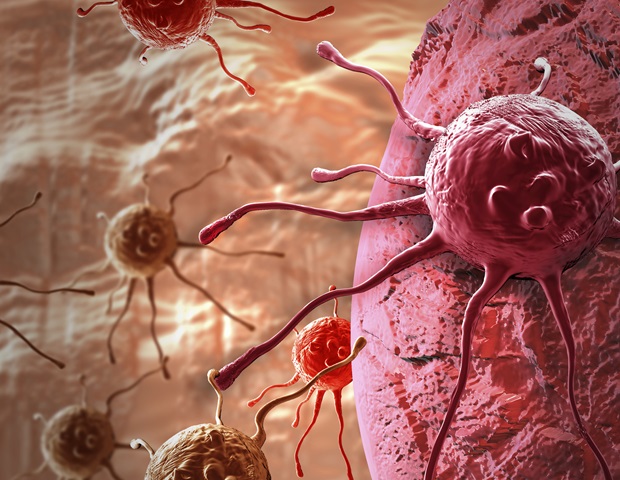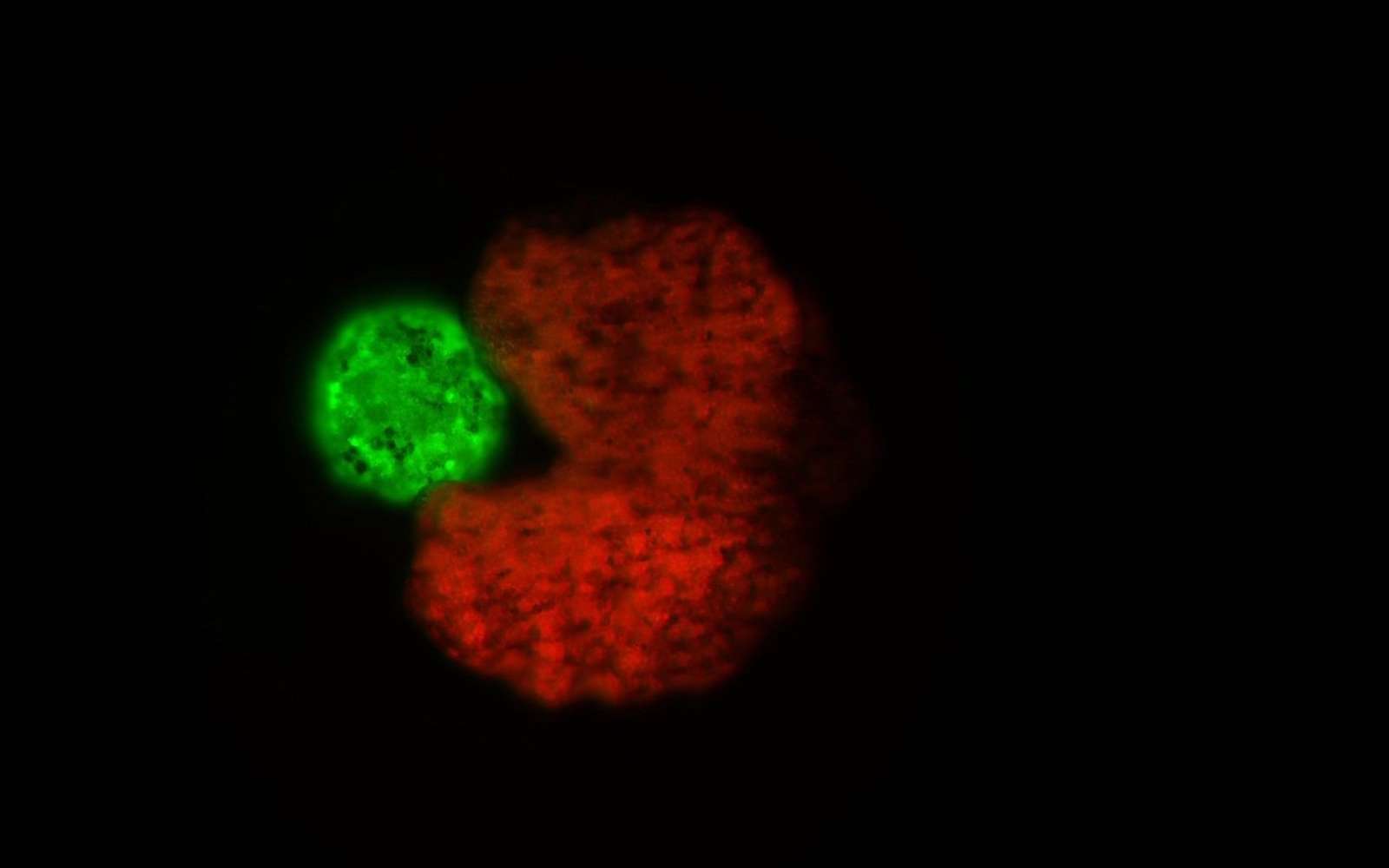Scientists from the Ural Federal University and the Ural Branch of the Russian Academy of Sciences have created new fluorochemical compounds (fluorophores) for photodynamic therapy of carcinomas, the latest method for treating cancer. The compound is suitable for simultaneously diagnosing tumor processes by staining affected tissues and their further treatment by destroying cancer cells without harming healthy cells. The results of the preliminary studies were published In the Dyes and dyes magazine.
The manufacture of these fluorophores is characterized by low cost, due to the presence of all derivatives in the composition, as well as the absence of impurities that can lead to side effects. The efficacy of fluorophore was tested on HeLa cells used as a model for cervical cancer. Now scientists are testing how the new compound interacts with other types of cancer cells.
Fluorophores are chemical compounds that emit visible light (photoluminescence) when exposed to ultraviolet or visible light. They are able to spread through biological tissues and spot cells exposed to inflammatory processes. Thus, a new compound interacts with biomolecules of body tissues and, under ultraviolet or visible radiation, stains the areas where the process of tumor growth occurs. This makes it possible to determine the size of the tumor in the body and determine its boundaries. During the experiments, scientists found that the new fluorophore performs a double function: it not only stains diseased areas, but also begins to destroy them.
Initially, we only investigated the dyeing properties of the compound. The compound is able to accumulate in certain areas of the cell – the cell membrane and its network (intracellular organelle responsible for protein folding), and under ultraviolet or visible radiation highlight the affected areas in light green. However, it turns out that the fluorophore then acts as a photosensitizer. That is, under the influence of optical radiation, it begins to interact with the surrounding cellular environment (oxygen, water, etc.) and generates free radicals, the so-called reactive oxygen species. These active particles enter into chemical reactions with affected cells, and begin to destroy them, while practically not affecting healthy cells. This is called photodynamic therapy, and it is a promising new method for treating cancer with high efficiency and with minimal side effects.”
Grigory Zyryanov, co-author of the study and professor in the Department of Organic and Biomolecular Chemistry at UrFU
Scientists using heterocyclic chemistry methods created two experimental samples. Chemists have synthesized fluorine acid based on naphthoxazole, an oxazole derivative used in the synthesis of medical and biochemical preparations, the naphthalene fraction used as a platform and the so-called antenna for more efficient perception of optical radiation by the molecule. In addition, chemists added fragments of pyrene and anthracene, polynuclear aromatic hydrocarbons with a high fluorescence response, that is, a brilliant glow, to the compound. The pyrene-containing compound exhibited the highest fluorescent and anticancer activity.
“The Pyrenees are most commonly used for bioimaging, and anthracenes are less common,” says Grigory Zyryanov. “These compounds are promising for many reasons, including that we were able to demonstrate that the pyrene-containing compound begins to glow even when irradiated with visible light, and this is visible even with the naked eye. This is very convenient, including, for example, for surgical interventions when they are necessary in treatment.
source:
Journal reference:
Slovesnova, Nevada, et al. (2022) Synthesis of a new water-soluble polyurene-replaced naphtho[1,2-d]Oxazole-based fluorophores as fluorescent dyes and biosensors. Dyes and dyes. doi.org/10.1016/j.dyepig.2022.110410.

“Wannabe internet buff. Future teen idol. Hardcore zombie guru. Gamer. Avid creator. Entrepreneur. Bacon ninja.”




